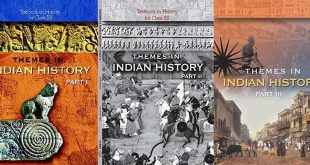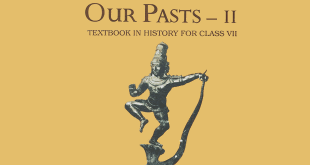Question: Define the following: (a) Birth Rate (b) Death Rate (c) Human Resource.
Answer:
- Birth Rate: The number of live births per 1000 persons is called birth rate.
- Death Rate: The number of deaths per 1000 persons is called death rate.
- Human Resource: Human Resource or people are the greatest asset to a nation. Human beings use their knowledge and skill to convert natural resource into more valuable goods.
Question: Discuss the importance of human resource.
Answer: Human resource or people are a nation’s greatest resource; they are an asset to a nation. People are important to develop the economy and society. It is people with their demands and abilities that turn a thing into ‘resources’. Human beings use their knowledge and skill to convert natural resource into more valuable goods. Hence, human resource is the ultimate resource. Healthy, educated and motivated people develop resources as per their requirements. Human resources like other resources are not equally distributed over the world.
Question: Describe how various factors affect population distribution.
Answer: Topography, favorable climate, fertility of soils, availability of fresh water, minerals are major geographical factors affecting population density of a region.
People prefer to live on plains more than mountains or plateaus and they live more in moderate climates than extreme hot or cold. From the agriculture point of view, fertile lands are preferred. Areas with mineral deposits are more populated. Some social factors that boost the density of population in a region are better housing, education and health facilities. Places with cultural or historical significance are usually populated. Employment opportunities are another attraction for large chunks of population.
Question: Describe how the population of the world has grown in history. What has caused the population explosion?
Answer: The world population grew steadily initially. It reached a billion in the year 1820. But the next two billion were added in just a hundred and fifty years. By 1970 the population was 3 billion. In the next 29 years, i.e. by the year 1999, the population had doubled to 6 billion. The population explosion has been mainly caused by the growth in medical facilities, which has decreased the death rate by a large extent.
Question: What are the factors affecting the population change in a region?
Answer: Factors affecting the population change in a region are birth rate, death rate and migrations. Birth rate is a statistic that measures the number of live births per 1000 people. Death rate is a statistic that measures the number of deaths per 1000 people. Along with birth and death rate, another factor affecting population change is migration. Migration refers to the movement of people from one area to another. People leaving a country are called emigrants and the phenomenon is called emigration. People arriving in a country are called immigrants and the phenomenon is called immigration.
 Class Notes NCERT Solutions for CBSE Students
Class Notes NCERT Solutions for CBSE Students




